News

Monitoring Öræfajökull – update 22. Dec. 2017
Real-time surveillance around Öræfajökull has been improved in the last month to better monitor the seismicity and the release of geothermal water from the caldera.
Read more
Monitoring Öræfajökull
Scientists from IMO, the Earth Sciences Institute of the University of Iceland and a representative of the Icelandic Civil Protection Authority flew over Öræfajökull Saturday 18 November to assess ice-surface changes in the volcano's caldera. They have been meeting over the weekend to analyse recent measurements and assess the situation.
Read more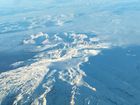
A new ice-cauldron in Öræfajökull volcano
New satellite images of Öræfajökull volcano shows that a new ice-cauldron has formed within the caldera in the last week. It seems that geothermal water has been slowly released from underneath the cauldron to the glacial river of the Kvíárjökull outlet-glacier.
Read more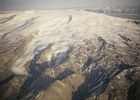
New seismic stations installed around Öræfajökull
Due to the recent increase in seismic activity around Öræfajökull, the monitoring level of the volcano has been potentiated. Since the end of October, three new seismic stations are streaming data into the monitoring system at IMO headquarter improving IMO's capability to detect and locate earthquakes in the area. This additional installation results in a much larger number of earthquakes of small size detected on a daily basis, and also improves the estimate of earthquakes spatial locations and their magnitudes.
Read more
IMO: Impact based color-coded warnings on web
The Meteorological Office is launching a new, color-coded warning system, thereby advancing service to the public and to stakeholders. The main changes are that the new system will be impact based and replaces an older system where only climatological thresholds were used as markers for warnings.
Read more
IMO at the Arctic Circle Assembly 2017
The Fifth Arctic Circle Assembly was held in the Harpa Conference Center in Reykjavík on October 13-15. The symposium was attended by 2000 delegates from more than 50 countries.
IMO scientists presented research and collaborative projects on climate change, Arctic hydrology and glaciology at the symposium.
Read more
International Day for Disaster Reduction – 13th of October 2017 – Home Safe Home
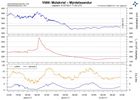
The flood in Múlakvísl has subsided
The glacial outburst flood in Múlakvísl has subsided. Conductivity measurements have slowly reached normal levels. Travelers are advised to show caution by the source of the river due to possible gas emissions.
Read more
Glacial outburst flood in Múlakvísl
Glacial outburst flood in Múlakvísl river is ongoing. People are advised to stay away from the river due to gas pollution; the river is showing a dark colour and smells of sulphur.
Read more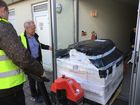
Delivery of scientific data
IMO has received a shipment of scientific data from Dr. Richard S. Williams, Jr., geologist, which will benefit research in various fields of natural sciences in Iceland. Dr. Oddur Sigurðsson geologist was there to receive the documents, which arrived on four pallets.
Read more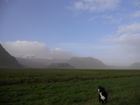
Funded MS student opportunity. Dust and ash re-suspension sources
This student opportunity is a part of a collaborative research project, called “Changes in the health effects impact of aerosol particles and natural source material following volcanic eruptions”, between the University of Iceland, the Icelandic Met Office (IMO), and the UK MetOffice.
Read more
How do you view volcanoes?
The Icelandic Met Office and King's College London are carrying out a survey on views toward volcanoes. It has two aims: to investigate Icelanders' and tourists' views about the 2014–15 eruptions at Holuhraun, and to assess the role of volcanoes and volcanic activity in Iceland more generally.
Read more
Bad weather is expected
The Icelandic Meteorological Office wants to emphasize the extremely bad weather which is expected tomorrow Friday 24th of February. Windspeed is expected to be 20 - 28 m/s (45 - 62 miles/hour) in the south and western part after noon tomorrow with strong gusts up to 40 m/s (90 miles/hour).
Read more

The Icelandic glaciers weighed from space
Mass balance measurements carried out by the Institute of Earth Sciences at the University of Iceland and the Icelandic Meteorological Office have shown that glaciers in Iceland have retreated and thinned steadily since 1995. The volume of the glaciers has been reduced by approximately 10 km³ per year on average. The mass loss of the glaciers causes perturbations in the Earth's gravity field near Iceland that are detected by sensitive instruments on board of German/American GRACE satellites.
Read more
The weather in Iceland in 2016
The year 2016 was very warm in Iceland. It was the warmest year on record in all stations in North-West part of Iceland and one of the warmest in other parts of the country. During the first two months of the year temperature were close to long-term means, but the last three months of the year were particularly warm. Wind speed was slightly lower than average. During late winter to mid-summer conditions were rather dry, but the autumn was very wet, especially in the southern part of Iceland
Read more


